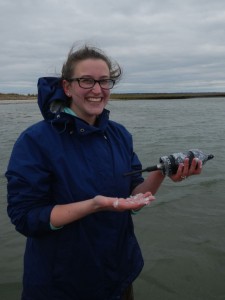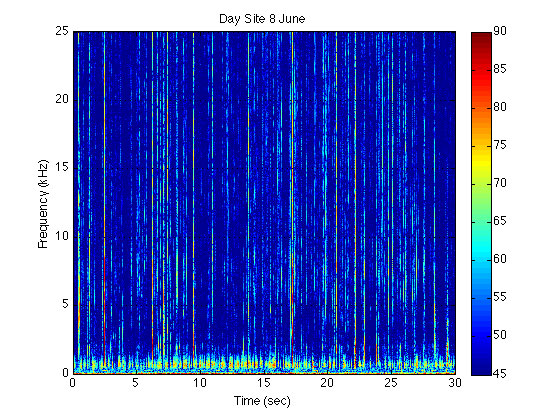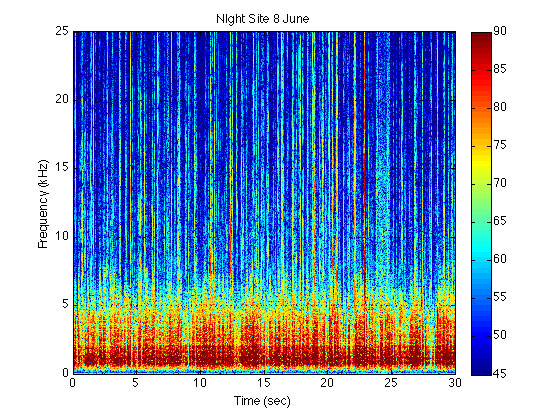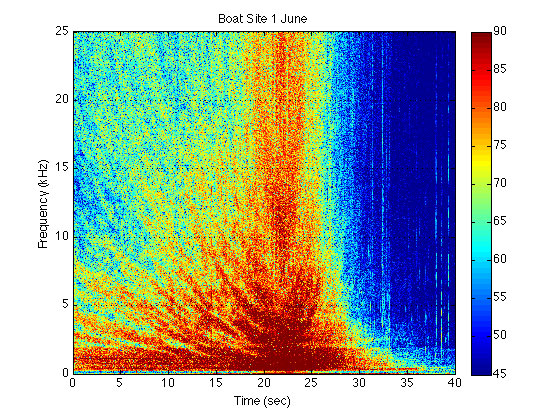Posted April 7, 2015
Shannon Brown is a graduate student at North Carolina State University. She is a researcher in David Eggleston’s Marine Ecology and Conservation Lab. Her current focus is on estuarine soundscape ecology. Brown also was a joint North Carolina Sea Grant/N.C. Coastal Reserve fellow in 2014.

Before deployment, I coat the hydrophones with Vaseline to prevent fouling. Photo by Seth Theuerkauf
My research focuses on characterizing the summer soundscape of sites within the Middle Marsh portion of the Rachel Carson Reserve in Beaufort. The reserve site is part of the N.C. Coastal Reserve and National Estuarine Research Reserve System.
A soundscape is the collection of biological sounds (produced by animals), physical sounds (produced by the environment) and anthropogenic sounds (produced by humans) of an environment or habitat.
The overall goal of my research is to provide a baseline soundscape characterization for the diverse collection of estuarine habitats in Rachel Carson Reserve.
We would expect the oyster reef, seagrass and marsh habitats in the reserve to sound different because of the ways sound propagates in each of those habitats. Also, different soniferous — or sound-producing — animals live in each of those habitats.
Previous studies have considered the soundscapes of discrete habitat types, such as reef vs. off-reef. However, the Rachel Carson Reserve hosts a mosaic of estuarine habitat types.
Exploring the underwater soundscape and the soniferous animals that contribute to this soundscape provides a unique perspective on how marine animals use habitats in space and time. Such study also has the potential to inform researchers about the quality or health of a given habitat.
Sound is critical to many marine animals for a wide range of ecological processes, including navigation, communication, foraging and defense. There is growing evidence that human activities contribute noise pollution that can interfere with animal behavior and their physiology. Establishing baseline soundscapes in different environments — and exploring the patterns and processes of the soundscape — will be essential to successful management of habitats and their associated soundscapes in the future.
I collected data from eight locations around Middle Marsh, marked on the map below.

I collected data from these eight sites on Middle Marsh, part of the Rachel Carson Reserve.
Here are spectrograms for audio recordings from two sites.
The spectrograms show time on the x-axis, frequency (or pitch) on the y-axis, and sound intensity (loudness) in color, with brighter (red) colors being louder and cooler (blue) colors being quieter.
Listen to the daytime soundscape of Site 8. The dominant sound — popping or crackling often described as ”bacon frying” — is that of snapping shrimp. You also can hear the chatter of a fish I have not been able to identify. You also can hear the “boop,” or boatwhistle, characteristic of an oyster toadfish.

Spectrogram of the sounds of shrimp and fish captured at one site in the daytime.
Listen to the soundscape of the same site at night. The dominant sound here is characteristic of a large aggregation of silver perch. These fish produce sound when mating, which happens in spring through early summer, mostly at night.

Spectrogram image of the sounds of fish captured at one site at night.
Listen to a recording of a boat near the hydrophone at Site 1. Once the boat passes it becomes much quieter, and you begin to hear the natural sounds again — water movement and some snaps.

Spectrogram image of the sounds heard at one site while a boat moves nearby.
Read more about my work in the Summer 2015 issue of Coastwatch.